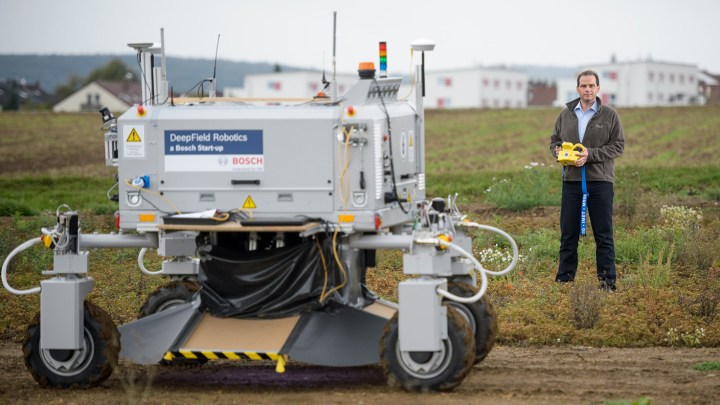
About the size of a compact tractor, the Bonirob will scan fields and monitor crops as they grow. All the scanning and sampling is processed in situ allowing the farmer to obtain this information right away, and removing the need to send samples to a laboratory and wait for the results. The machine can tell farmers how much water and fertilizer to add to their crops as well as provide valuable information about whether the plants are resistant to known pests.
Besides growth monitoring, the Bonirob can also help farmers with one of their most arduous chores — weeding. Using machine learning, the Bonirob is being taught how to identify weeds ad destroy them before they have a negative effect on a growing crop. Using imaging, Bonirob can examine leaf color, shape and size as it weeds out those plants that are not wanted in the field. Weeds are then removed mechanically, avoiding the use of potentially dangerous herbicides.
The robot’s weeding mechanism is a ramming rod that crushes the unwanted weeds so the desired crop can flourish. According to Deepfield communications head Birgit Schulz, the Bonirob was more than 90 percent effective in carrot cultivation trials. In areas where hand cultivation is still needed, the Bonirob can use its crop data to direct workers to areas that need the most weeding.
The Bonirob is a joint project between Deepfield Robotics, Bausch, Osnabrück University of Applied Sciences, and Amazone. Amazone originally developed the Bonirob and showcased the field robot at the 2011 Agritechnica show. This latest Bonirob is an iteration of the previous device that has been upgraded for weeding and other applications. The public project is being funded by Germany’s Federal Ministry of Food and Agriculture. The company is offering the technology for research purposes, and farmers may have to wait a while before they can purchase a unit for use in the field. Deepfield expects it robots will transform the farming industry in 20 to 30 years.



